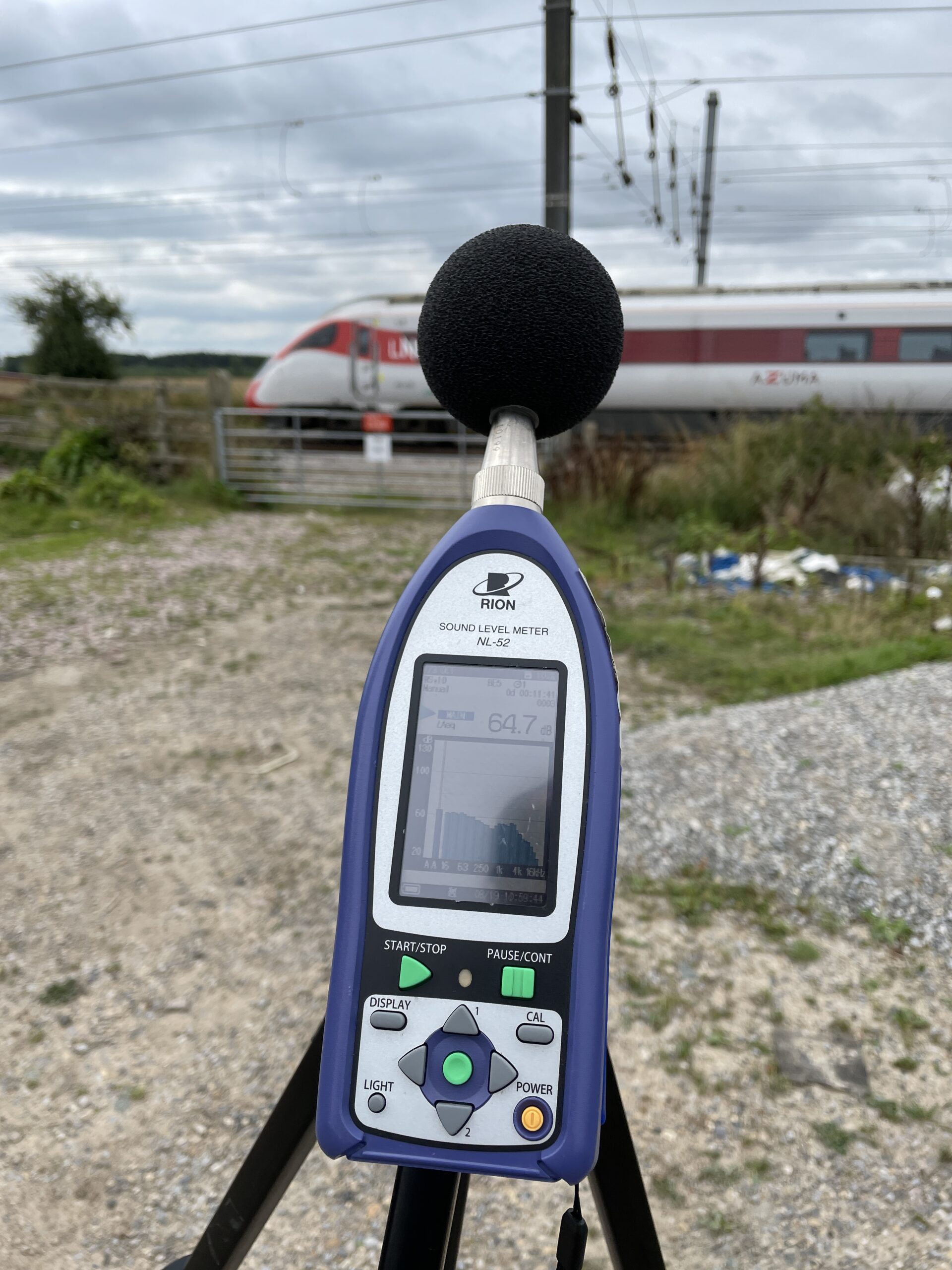Project Outline
The train operated warning system (TOWS) is a permanent static installation consisting of a number of yodels that are spaced an equal distance apart. It is allowing workers to carry out maintenance works on the operational rail line without the need for possession. To ensure the safety of line-side workers the system is designed to emit a high level of noise in the period before and during a train pass to warn track operatives. To gain a better understanding of the potential impacts of the TOWS system on sensitive receptors a noise assessment was carried out, the results of which will be used to inform the future design and mitigation strategy before deployment in multiple areas.
Our Role
Currently, there is no specified methodology or standard for assessing a system of this nature. British standard 4142 (BS 4142:2014+A1:2019), methods for rating and assessing industrial and commercial sounds were adopted for the purpose of this assessment and it distinguishes between the uses of the words “sound and “noise”. Sound can be measured by a sound level meter or other measuring systems. Noise is related to human response and is routinely described as unwanted sound, or sound that is considered undesirable or disruptive.
Our Services
To inform our assessment and advice Temple’s acoustics team carried out the following works:
- Sound power measurements of an individual TOWS unit to establish sound power level and directivity
- Screening level noise assessment using ArcGIS
- Baseline noise survey
- Detailed noise assessment using environmental noise modelling software
- Mitigation advice
Our Value
To avoid the significant adverse effects and minimise the adverse impact on the identified sensitive receptors, the client outlined mitigation measures. The effectiveness of measures that cause the least disruption to the scheme design were investigated further. Our expertise allowed us to derive appropriate methods to assess the impacts of the proposed scheme.
On completion of the scheme, once operational, Temple will undertake post-completion monitoring to verify predictions and mitigation strategy effectiveness. This will increase the certainty of the mitigation measures effectiveness for future TOWS system installations.

